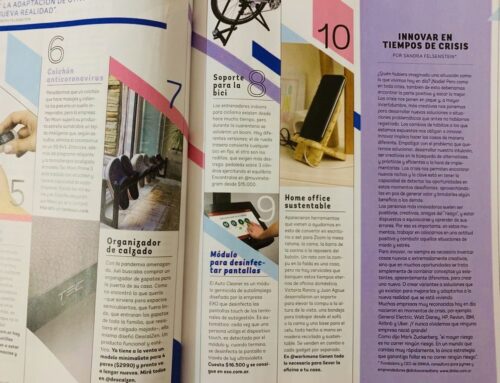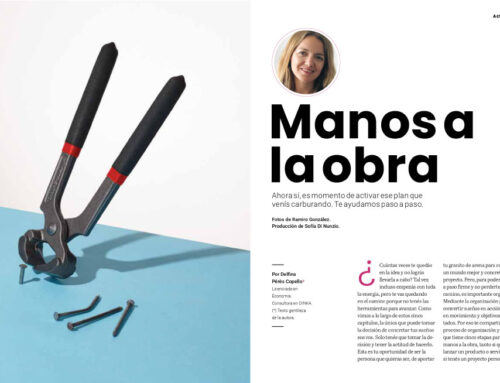The crisis unleashed since April requires cutting expenses. Two experts explain how to handle the mix of products, stocks, suppliers, HR and financial flows. In addition, three B2B firms show how to improve efficiency in means of payment, equipment and technology.
A large majority of companies, after the devaluation unleashed in April, have been suffering the worst imaginable situation. To the fall of the domestic market product of inflation, which eats wages and retirements, a fierce rise of its own costs was added. But at the same time, firms become impossible to apply an equivalent increase in their prices, under penalty of seeing their already beaten demand. The result, by the way, is an acute fall in profitability: a much lower unit margin is added to the lowest volume.
In numbers: what is usually called inflation is quantified with the retail price index (CPI). In the September 2017-September 2018 period, the CPI advanced 40.5%, against a salary rise between 12 and 15 points less. But the mother of the sheep are wholesale prices (IPM), that is, the values that firms face when they pay the inputs or finished products (if they are merchants). Thus, in those same 12 months the IPM grew 74%, with the aggravating fact that electricity made 85%and oil plus gas, a whopping 145.5%. Not to speak, in addition, the financial costs, due to the official strategy of stopping the dollar by increasing the interest rate to values that exceed 70% per year.
I don't want to go so crazy, Charly García sang. But what can be done with the costs of inside in a small or medium company, if they continue to hit us down?
Costs yes, never quality
Sandra Felsenstein is an industrial engineer for the UBA and founder and director of Dinkka, a consulting firm specializing in SMEs. To answer the question, he almost gets angry when he analyzes the option to lower quality standards as a way to reduce costs: “In no way the cost reduction must impact the quality of the final product. Attracting the customer is difficult, but even more it is to loyalty. Therefore, it should always be taken into account or even improve the quality of the product or service,” he explains.
Clarified this starting point, the expert goes from the general to the particular: "The important thing," he explains, "is to make a thorough review of the expenses, to eliminate those that do not represent an added value for the client and that, on the contrary, generate greater costs." Then Felsenstein is adding clues, in order to place the magnifying glass in specific areas. To begin with, look at the mix offered. It suggests detecting “certain products of slow or low rotation demand, which consequently remain in stock or even finally are destroyed. Thus, minimize or even cancel these merchandise is a good option, because it should always be remembered that the excessive stock translates into immobilized capital, occupied space, manipulation costs, rupture risks, etc.”.
The next chapter to look to reduce costs, according to the director of Dinkka, are the suppliers. “It is essential to meet with them and renegotiate conditions, something that should be addressed as soon as possible to prevent unpaid invoices and the debt is increasing. They are not alien to the situation and will decide if they want to accompany their clients in what the crisis lasts, or if it will be our time to look for provision alternatives. However, many times the SMEs do not have alternative suppliers Options, ”he warns.
The consultant now advances with the organization of work: one of the factors that frequent Tasks related to their position, what are their responsibilities and what is expected of them, to optimize the work of each area and avoid waste ”.
However, when rationalizing task, the specialist raises an alert about the role of the owner of the SME: "Special attention must be paid to the despair and the desire to reduce expenses, the entrepreneur does not end up performing operational tasks, moving away from what is really crucial to straighten the ship: work on the strategy." And he adds: "In any case, during the times of crisis, managers should not only put their energy to lower costs, but also in keeping their team motivated to continue betting on the project. The team must be perfectly aware of the situation and feel that it is part of the process of overcoming the crisis."
Marketing, Investment, RR.HH.
Another strong warning of the engineer goes through the impulse to reduce the endowment in response to the crisis and the need to lower costs. “Before dispensing with some collaborators, other alternatives that allow this complicated period, because they fire personnel, beyond how stressful and unpleasant it it can also affect the productive capacity, generating an inconvenience greater than the savings achieved. To these actions, it is much more expensive and generates greater hidden costs. ”
That said, Felsenstein suggests some measures to reduce personnel costs: "For example, some type of working day or shorter work weeks. Also cut extra bonds, postpone salary increases, advance vacations and other options that may even contribute the employees themselves, to collaborate in maintaining the activities of the firm and preserve the sources of work."
Two other lines points the expert, to rationalize the activities. First in marketing. He advises not to lower his intensity, but to change the channels: “You must take advantage of the great possibility that digital tools (social networks, mailings and others) must provide, replacing the old brochures or the very expensive ads by TV or public route. A good communication plan will call the attention of own customers and other users of similar products. The important thing is not effective and low cost ”. Its next axis is innovation, "which is usually thought of as a great investment and only suitable for large companies. But it also happens to find alternative solutions, which often generates important savings," he explains.
Finally Felsenstein faces a question in appearance out of place and time: Can you think of investing while seeking costs? "You have to differentiate both things," he clarifies. "Costs are expenses in each exercise, while an investment is an improvement that will bear fruit. For example, invest in more efficient machines. Anyway, it is important to invest without generating financial inconveniences." Thus, credits can be appealed, “but always investigating thorough benefits much superior to what they had at that time. ” The end was happy, he explains, because "shortly after its implementation, merchandise returns decreased significantly. Clearly, investment in this case significantly improved monthly costs."
DAMN RATES
The financial cost, everyone knows, has shot in recent months. But there are some other options at the time of anchoring the company, according to Carlos Díaz Delfino, a partner with Daniel Romano and Laura Fiocca in the consultant who carries her last names, and specialized in mergers and acquisitions as well as in strategic advice, planning and control for medium -sized companies. First, Díaz Delfino brings a tool for self -diagnosis: “If a company has a level of indebtedness that the services of interest equals most of the operational profits, the financial risk is very high. Because before any unforeseen event (reduction in the volume of activity, decrease in gross margins, etc.), the company could not deal with the payment of debt services. In that circumstance, it is preferable to offer discounts or bonuses To receive customer payments for a shorter term, although this tool must be used with great care.
As alternatives to finance, Díaz Delfino suggests resorting to the capital market, “with the issuance of instruments such as an ON (negotiable obligation) SME or, inclusive, analyze the opening of capital to the market. Access is not so simple in times of financial turbulence as the current one and, in addition, not all SMEs are prepared administratively for these processes, because society will begin to be subject to important requirements for presentation of accounting and financial information.
Another option, he says, would be to add a partner "to contribute capital to the company, issuing new shares or quotas." And additionally it can be resorted to loans guaranteed by a reciprocal guarantee society (SGR), thus accessing more convenient interest rates. Also, at times where market rates are greater than the financing rates of tax debts (AFIP and others), some firms decide to enter moratoriums or tax payment plans.








